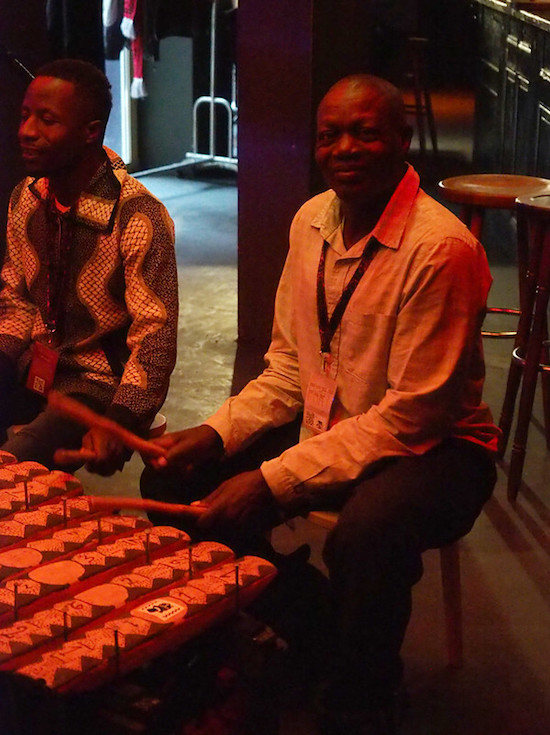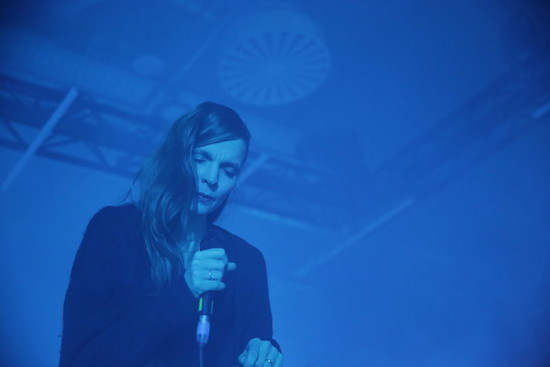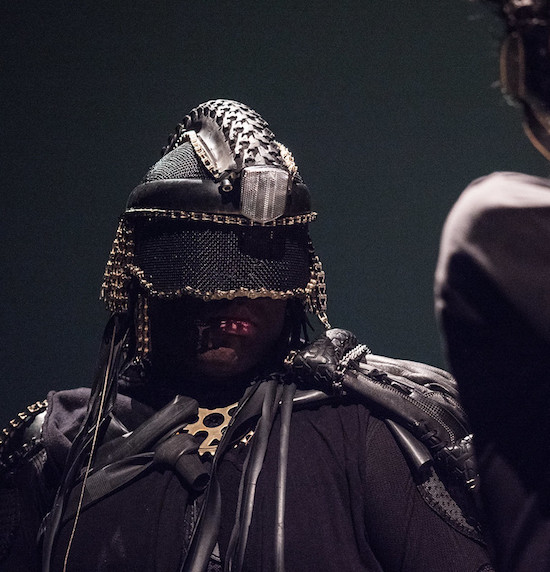Photograph by Eunice Maurice
“Music festivals aren’t for forgetting. They are for remembering.”
It’s a simple idea that pops out during a roundtable discussion one afternoon during CTM, Berlin’s marathon ten-day festival of experimental pop, electronic music and visual arts. The panel happens to be taking place on the same day that Britain officially leaves the EU, January 31 – triggering an urge in many to unplug from grim reality as quickly as possible.
It’s Jacob Bilabel that makes the comment about forgetting and remembering. The Berlin-based founder of the Green Music Initiative (GMI) is involved in greening the music industry through various energy efficient schemes, including using hydrogen generators at festivals. He’s reminiscing about going to festivals in his twenties and having fun dropping lots of acid – it was during one of those acid trips that he had an epiphany which led him into doing environmental work. He doesn’t do acid now, he says, but he still believes in the power of a good music festival for opening up minds to different realities, or letting music bond people together on a filthy dancefloor or through a loud set of speakers.
The night before, on Brexit-Eve, respite is available from the sinister sado-masochistic machinations of the UK government behind the walls of Berghain. Walking into the techno club to see the gorgeous Georgian national choir on stage is not the kind of man on man action the venue normally sees (thankfully, that is all still going on downstairs in Säule, the dancefloor below). But watching eight sombre men dressed in black (unwittingly following the unwritten Berghain dress code) and hearing the haunting and ancient harmonies of Ensemble Basiani backed up by a pulsing techno score by Beste Aydin, aka Nene H, feels like exactly the kind of jolting solace from external chaos that is needed. ‘Chela’ was a special commission for CTM, ‘A festival for adventurous music and art’ first founded in 1999, with a different theme each year – for 2020 the theme is ‘Liminal’.
By day at CTM, liminoid experiences come in the form of exhibitions and talks, and by night things transition into sweaty, boundary blurring club nights in venues around town. An exhibition called ‘Interstitial Spaces’ inside Kunstraum Kreuzberg (the former Bethanien Hospital which was a squat in the 70s and is now an arts space) takes the liminal theme beyond music. Artist Nural Moser grew up in a mixed race Muslim family in Vienna and takes inspiration from her anti-authoritarian parents and the oppressive power structures they all lived under in ‘Safety Travelling’. It’s a collection of photos of Moser wearing a full burqa in airports around the world, a long running experiment where she began to record her movements through geographical and legal boundaries, silently sliding between different religious beliefs and gender values. Next door is ‘Ademruimte’ (‘Breathing Space’), by a Dutch collective of health workers and designers. They’ve made an indoor zen garden where you walk across stepping stones into a big white cube with Japanese-style paper walls, forget about Brexit or Trump or indigestion or whatever ails you, and take a seat. Turning a dial, you can adjust the speed of slowly throbbing white projections on the floor in front of you, and breathe in time with them, like a 3D version of the Calm app, prescribed for ten minutes at a time.
A few hours later, Indonesian duo Gabber Modus Operandi are doing everything they can to crank up heart rates with their frenetic set of souped up beats, accompanied by Jakartan musician Harsya Wahono and Uganda’s incredible Nakibembe Xylophone Troupe. Eight men batter out euphoric patterns while sitting around the embaire, a rare, huge wooden xylophone from southern Uganda. It’s a giddy blur, an unleashing of grinning energy, and the crowd (many of them wearing corporate-looking lanyards in da club, which never stops looking weird, particularly in Berghain or other queer spaces around town) submit with almost no resistance to the hyper rhythms.

Photograph by Udo Siegfriedt
Many other underground Ugandan artists get a chance to show off their phenomenal talents, thanks to an ongoing collaboration between CTM and Nyege Nyege, the four-day festival which started in 2015 in Jinja, Uganda. Afrorack makes bubbling, colourful shapes on his DIY modular synthesiser, Catu Diosis (who runs fashion label, Catwings and teaches young Ugandan women how to DJ) warmed up a daytime party with a big, bass heavy set to announce a collaboration between Nyege Nyege and the very extra Berlin sunglasses collection, Kuboraum, where oversized shades drip in tassels and black veils. The fabulous force that is MC Yallah had a 3.30am slot in Schwuz, a former brewery turned community centre/ nightclub in Neukӧlln which now hosts queer porn screenings, Madonna-themed parties and vogue-ballroom dance performances. The party gets loose and loud until the small hours, then keeps going into the next day – being a Berlin-based festival, naturally CTM’s afterparties blur in easily with Berlin’s chilled timetable of three-day-long parties and 10am trips to a dancefloor.
Outside the clubs, CTM let its themes of ‘transcultural hybridisation’ and ‘digital fluidity’ seep across the city to the Botanical Gardens, about an hour away from Neukӧlln down in Steglitz in southwest Berlin. ‘You Will Go Away One Day But I Will Not’ is an installation by Brazilian artist Maria Thereza Alves and Colombian producer Lucrecia Dalt in the huge tropical greenhouse. Walking underneath massive banana leaves and layered canopies of green, sounds heard through headphones shift and change as you move between the rooms and plants. The noise of dripping water or a gushing downpour is interrupted by electronic pulses, wooden flutes or snatches of chatter from the indigenous Guarani people of Brazil, who Alves has worked with since 1980. It’s a refreshing step out of time and place, comfortably sitting in the liminal space between natural bird squawks and computer-built soundscapes.

Photograph by Stefanie Kulisch
Considering the ugly political climate outside the festival, it’s a beautiful thing that CTM’s programme avoids any inward looking eurocentrism with a lineup that sprawls over continents. To keep things interesting and diverse, there are showcases of Canadian, south-east Asian and Nordic artists, for example. (A few days after performing her beautiful score for the TV show Chernobyl alongside field recordist Chris Watson in the cavernous concrete venue Betonhalle for CTM, the Icelandic cellist and composer Hildur Gudnadóttir wins the Best Original Score Oscar for Joker.)
It’s a massive festival which overlaps serious discussions of climate change, gentrification and globalisation with networking opportunities for music industry folks. But when the lanyards are off, the festival is careful to keep prioritising the very thing it’s so determined to maintain – putting on a chilled out, dense selection of fun and fresh music from around the planet. Escaping into it for a few days of discovery (and rediscovery) is a very welcome thing.


